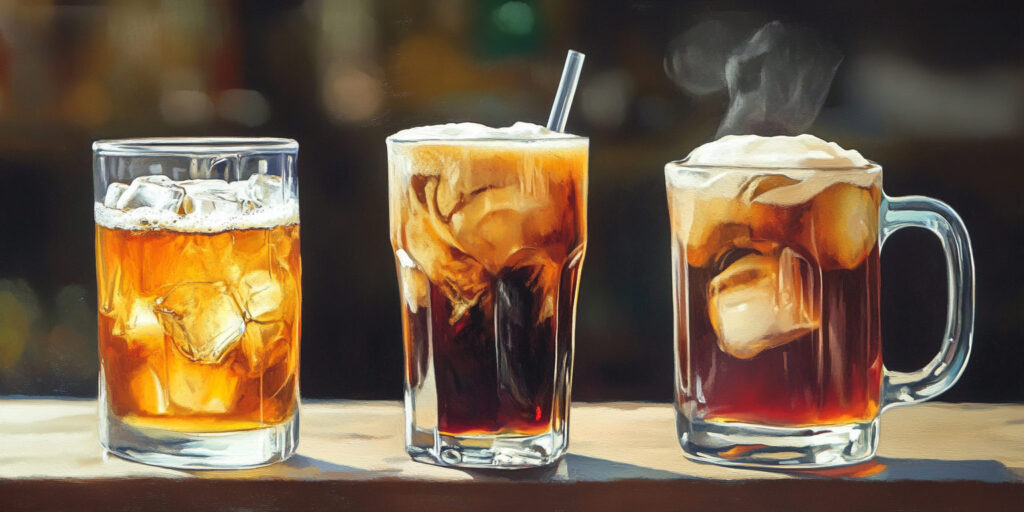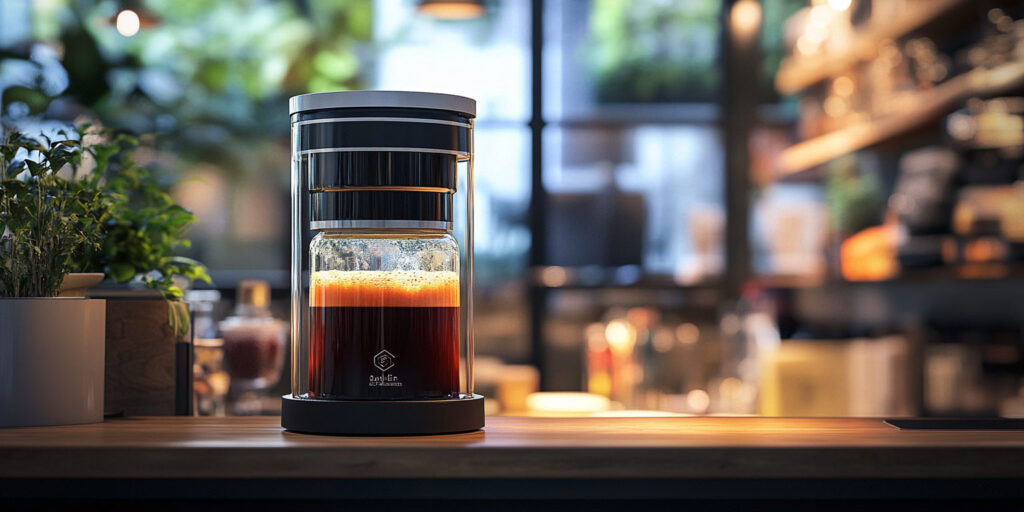
El café cold brew tiene una historia larga y rica que se remonta a varios siglos. Se cree que esta práctica se originó en Japón en el siglo XVII, donde se conocía como “café estilo Kioto”. Este método consistía en remojar café molido en agua fría durante un período prolongado, permitiendo que los sabores se desarrollaran lentamente. La técnica se difundió por todo el mundo, siendo especialmente popular en regiones con climas cálidos. A principios del siglo XX, el cold brew ganó popularidad en Sudamérica, donde se perfeccionó aún más y se integró en las culturas locales del café. Ya en el siglo XXI, el café cold brew se había convertido en un fenómeno global, impulsado por el auge de las cafeterías de especialidad y una creciente apreciación por su sabor suave y bajo en acidez.
El café cold brew pasó de ser un método de preparación de nicho a convertirse en una tendencia generalizada, gracias a los avances tecnológicos y a la preferencia del consumidor por bebidas más suaves y menos ácidas. Históricamente, su elaboración era un proceso laborioso y lento.
Línea de Tiempo del Cold Brew
- 1600s – Se documenta por primera vez el cold brew en Japón como “café estilo Kioto”.
- 1830s – La técnica se difunde a Europa y Sudamérica, donde surgen nuevas variantes.
- 1960s – Se populariza en Nueva Orleans, donde se mezcla con achicoria.
- 1990s – Se convierte en tendencia en cafeterías especializadas de EE. UU.
- 2010s – Explota a nivel mundial con marcas como Starbucks lanzando versiones embotelladas.
- 2020s – Se introducen máquinas avanzadas de cold brew que aceleran el proceso y refuerzan su presencia en el mercado.
El Futuro del Cold Brew
A medida que el mercado de cold brew continúa creciendo, se espera que los futuros avances se centren en la tecnología y la sostenibilidad. Se prevé el desarrollo de máquinas que reduzcan el tiempo de extracción sin comprometer el sabor, lo que facilitará la producción de cold brew de alta calidad tanto en cafeterías como en hogares. También se incrementará el enfoque en empaques ecológicos y prácticas de abastecimiento responsable. Además, se expandirán las opciones de sabores y métodos de preparación, incluyendo bebidas listas para consumir, cold brew con nitrógeno e incluso café frío con gas.
Hoy en día, las máquinas modernas han simplificado el proceso, haciéndolo más rápido y eficiente sin perder sabor. También han surgido versiones con nitrógeno y productos listos para tomar, ampliando el mercado del café frío. El empaque del cold brew también ha evolucionado, priorizando la sostenibilidad mediante materiales ecológicos y reduciendo los residuos.
Aceleración y Crecimiento del Cold Bre
Uno de los mayores avances tecnológicos ha sido la reducción del tiempo de extracción. Tradicionalmente, se requerían hasta 24 horas para preparar cold brew con su sabor característico. Las máquinas modernas han reducido ese tiempo a solo unas pocas horas o incluso minutos. Esta eficiencia ha hecho que el cold brew sea más accesible, especialmente en entornos comerciales donde el tiempo es clave. Como resultado, el mercado ha crecido rápidamente, satisfaciendo la alta demanda sin largos tiempos de espera.

Ventajas y Desventajas del Cold Brew
Ventajas:
- Sabor suave y bajo en acidez, ideal para estómagos sensibles
- Menos amargor que el café caliente
- Ideal para beber solo o con hielo
Desventajas:
- Requiere más café molido, lo que lo hace más costoso
- Tiempo de preparación más largo
- Menos complejidad de sabor que el café extraído en caliente
Evolución de las Máquinas de Cold Brew
Las máquinas de cold brew han evolucionado significativamente. Los primeros métodos consistían en macerar el café en grandes contenedores por muchas horas. Las máquinas actuales utilizan sistemas de filtración avanzados y extracción por presión para reducir el tiempo de elaboración. Algunas incluso integran infusión de nitrógeno, creando un cold brew cremoso y suave. Estas tecnologías permiten un control más preciso de variables como la temperatura, la presión y el tamaño del molido.
Tipos de Máquinas de Cold Brew
- Infusión por Inmersión: Usa el método tradicional de remojo durante 12-24 horas.
- Torres de Goteo en Frío: Permiten que el agua gotee lentamente a través del café durante varias horas.
- Máquinas de Cold Brew con Nitrógeno: Infunden nitrógeno para obtener una bebida espumosa y cremosa.
- Extractores al Vacío: Usan presión para preparar café frío en apenas 10 minutos.
- Máquinas Automáticas de Cold Brew: Programables para controlar tiempo y temperatura, reducen el tiempo de elaboración a unas pocas horas.
Cómo Funcionan las Máquinas de Cold Brew
Cada tipo de máquina tiene un funcionamiento distinto, pero todas comparten el objetivo de extraer sabor sin calor. Las de inmersión dependen del contacto prolongado entre agua y café. Las torres de goteo controlan el flujo de agua para una extracción lenta. Las máquinas con nitrógeno cambian la textura del café, mientras que los extractores al vacío aceleran el proceso con presión. Las máquinas automáticas combinan todas estas funciones para ofrecer resultados rápidos y consistentes con poca intervención manual.
¿Quieres que lo traduzca también a formato SEO optimizado o resumido para redes sociales?
